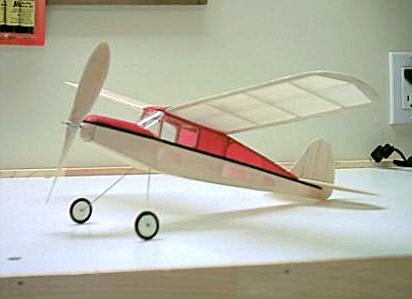
Jim Moseley, in Ontario, Canada built this Redwing - very neatly finished, and remarkably light at only 16 grams, without rubber.
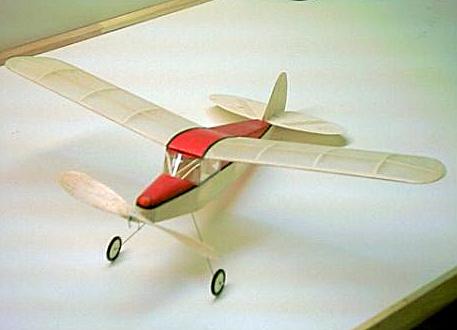
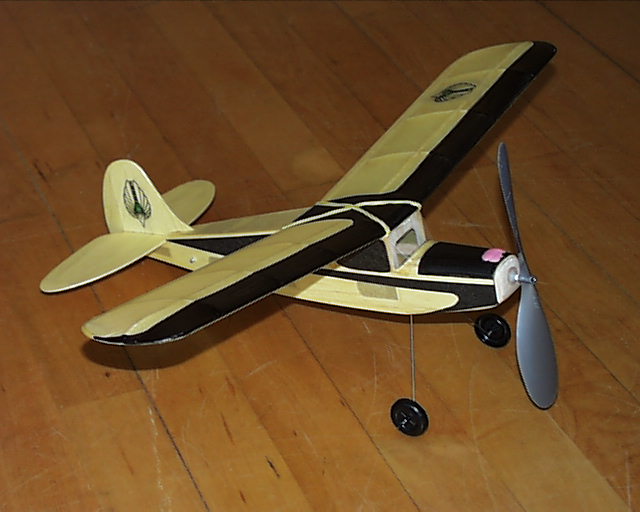
Another nice Redwing, this time by Steve Kranish. Weight without rubber 18 grams, with rubber and noseweight 25 grams. Neat black tissue trim looks very smart.
After a period of careful trimming, this model has broken the minute barrier, with an impressive time of 73 seconds. The final setup he used may be of interest: 1/16" shim under leading edge, 1/16" downthrust shim, no side thrust, slight (1/32"?) right rudder and 4 strands 3/32"rubber.
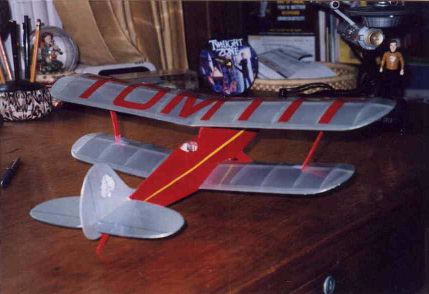
Bob Stewart built this handsome Tomtit, and finished it a very tasteful period type scheme. Airframe weight came out to 23 grams, which is very respectable. It has flown 49 seconds on a loop of 3/16" rubber.
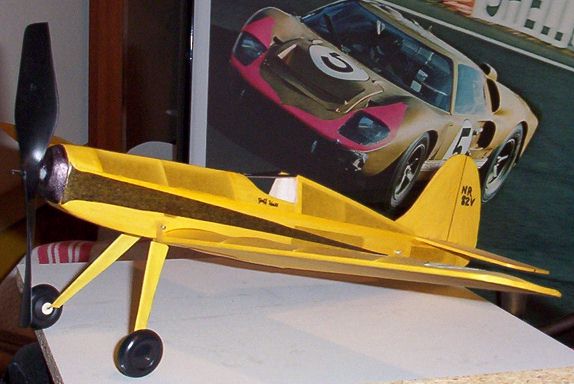
Jeff Hall was one of several people who made Ravens - I think it was the most popular type in the cookup. Very neat tissue finish evident on this one.
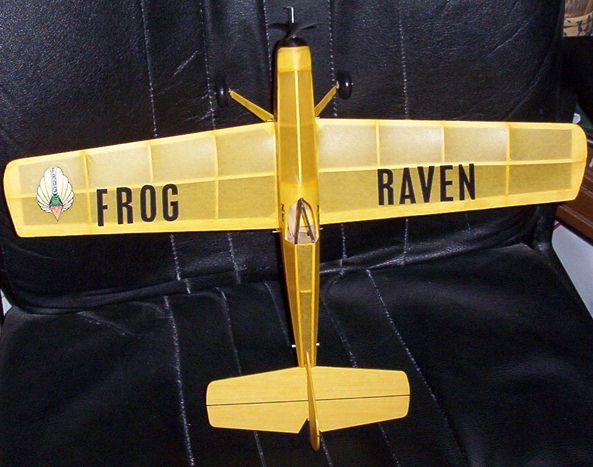
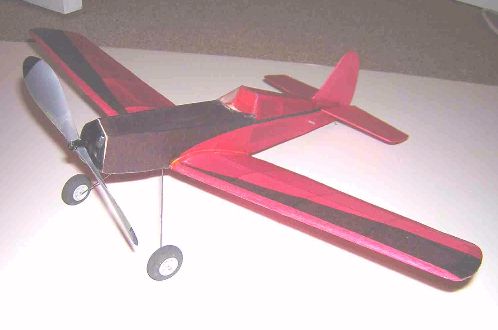
This is Bill Brown's Raven - came out at 20 grams, and I saw this flying nicely at Peterborough this year (2004).
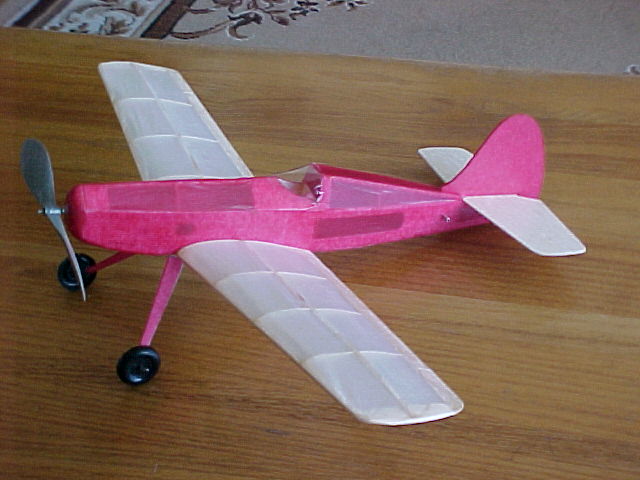
Garry Hunter (of "The Plans Page" fame) built a Raven as well, and flew it at Courtice, Ontario. I would imagine a Frog Model is a pretty rare sight on a Canadian flying field!
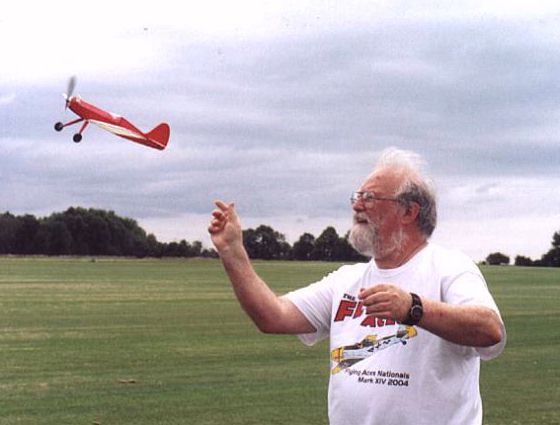
Thanks to Jim Moseley for the photo.
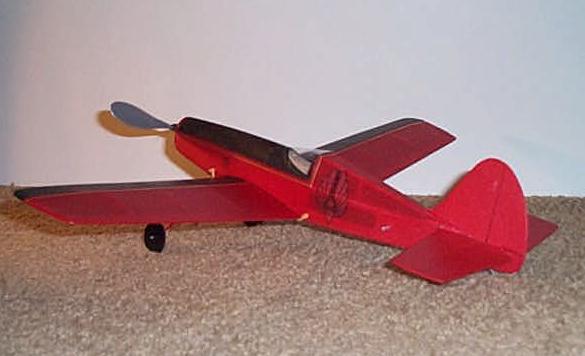
Another Raven, this time by Gene Smith. The model is trimmed to fly right under power and in the glide. The motor is two 20" loops of 3/32. It has right and down thrust and a bit of left rudder. dry weight is 24 gm and the motor adds another 4gm. When testing the model this spring Gene had one thermal flight of over 2 minutes! Normal unassisted flight times are in the high 50's, or just over a minute.
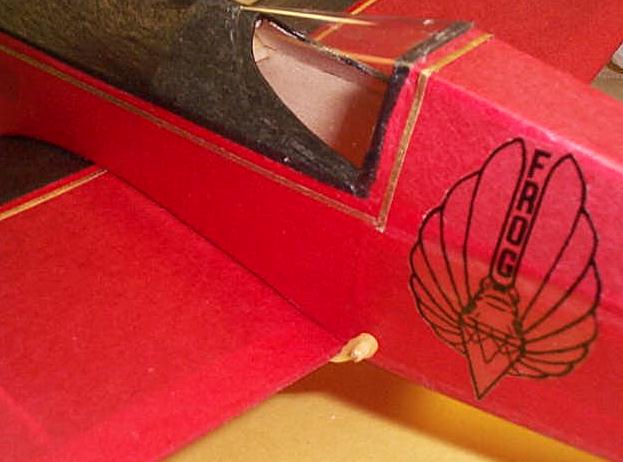
In case you were wondering how the smart gold trim was applied, this is how Gene did it:
The gold pinstripe on the fuselage is gold painted tissue. Poster tape was used which is thin and has adhesive on both sides. It comes on a roll with a paper backing. The poster tape was taped, sticky side up, to a sheet of glass. The gold tissue was then applied to the tape. A straight edge and a new #11 blade were used to cut the tissue/tape sandwich into strips. The backing was then removed from the tape and the stripe applied to the model.
Neat tip - thanks.

Bob Chiang did take a few liberties with his Heron (spot the built-up fuselage) but finished up with an attractive model. I think this was the only Heron built for the Cookup - If I am wrong, let me know and send a photo!
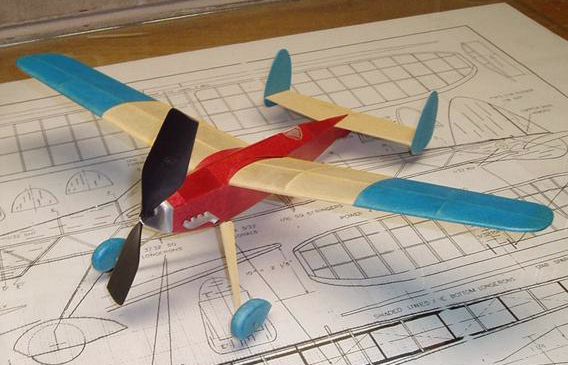
LeRoy Bidgood added wheel pants and an exhaust to his Linnet, and I think they suit it rather well.
Back to home page
Back to Frog Senior Series plans
On to rubber powered Scale plans
On to more rubber model plans
On to Frog Junior Series plans
On to Frog Junior Series scale plans
On to Frog glider plans
On to the 1960 catalogue page
On to the Wilmot Mansour Commemorative Exhibition report
On to the links page